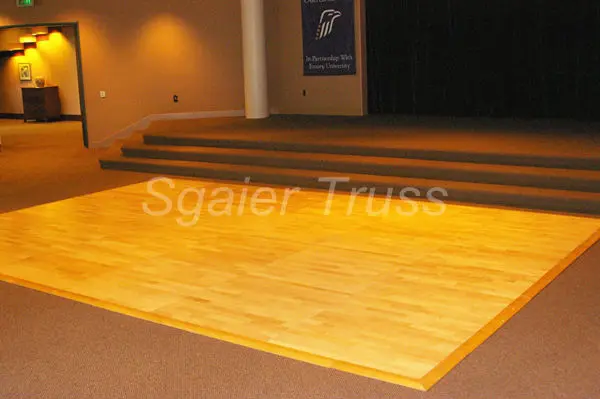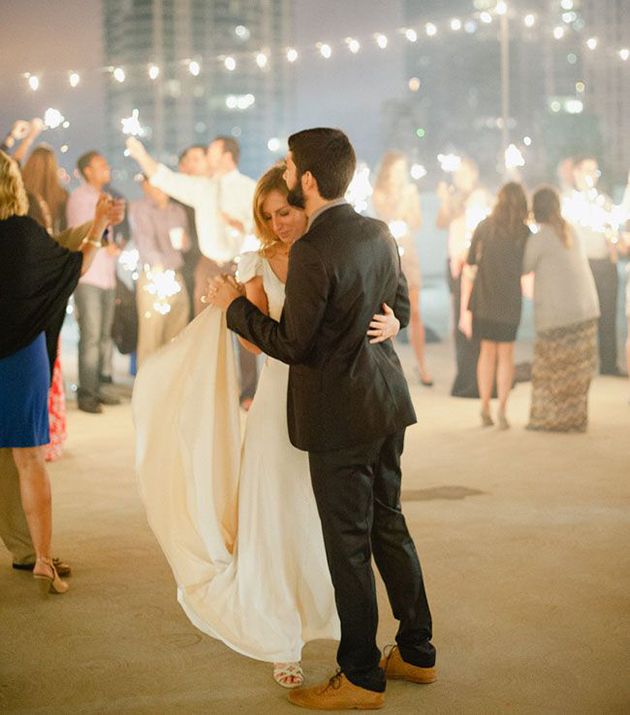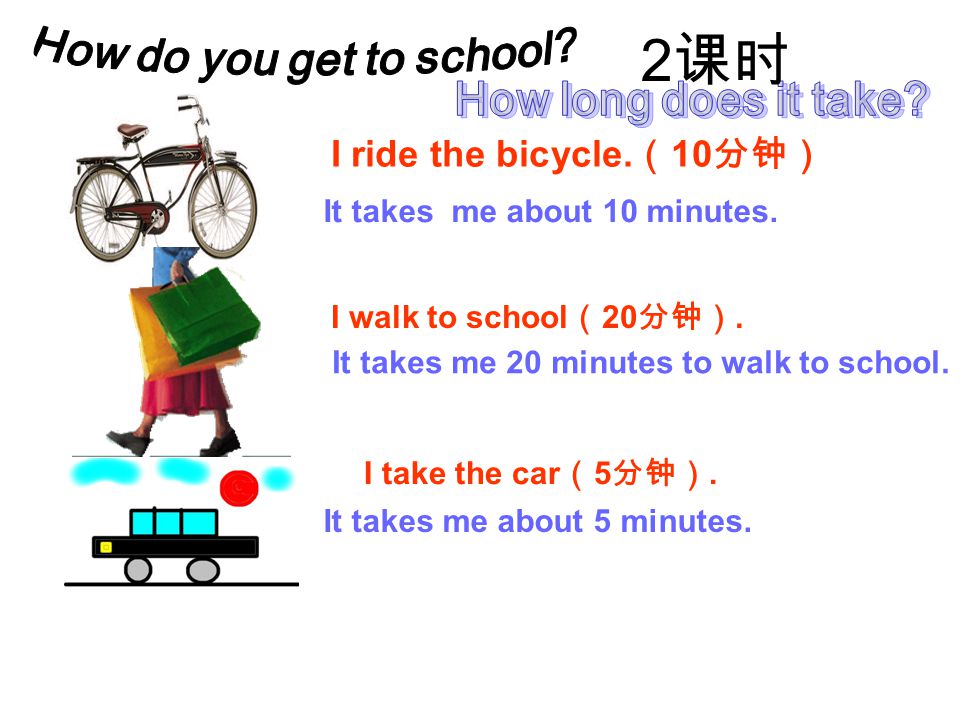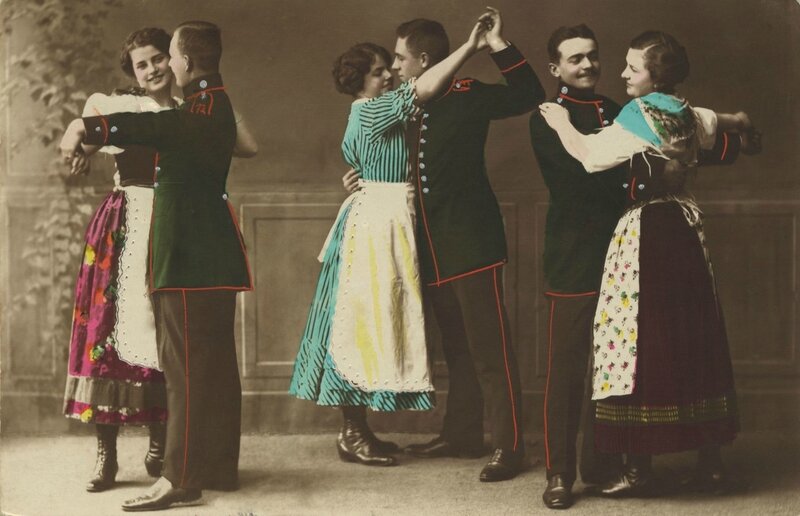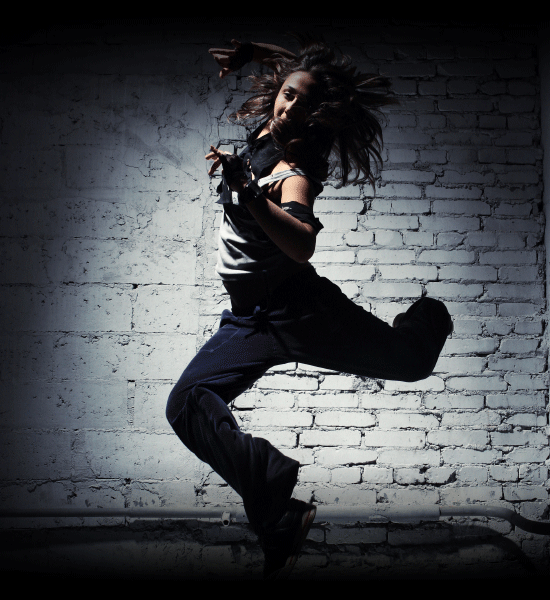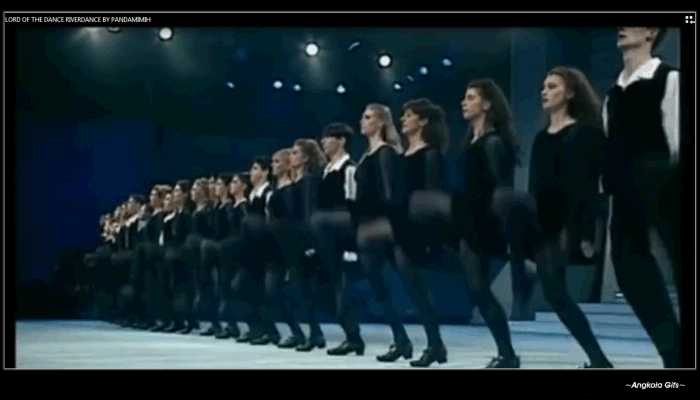How to make a wooden dance floor
How to Build a Dance Floor
Home / Latest Posts / Life / Party Ideas / How to Build a Dance Floor
By: Leigh Anne Wilkes
This tutorial will show you how to build a dance floor using 2 x 2’s and sheets of plywood. So easy and less expensive than renting one.
I shared with you in a previous Wedding Carnival post the story of our dance floor. When we decided to book a live band for the Wedding Carnival I thought we needed a dance floor. My husband did not. We have a large backyard and plenty of grass and he thought dancing on the grass would be just fine.
I am not easily dissuaded or discouraged.
I got on line and immediately started pricing dance floors from rental companies. They are not cheap, between $700-800 for the size we needed. It wasn’t in the budget so I decided I needed to get creative.
To make a somewhat long, 5 month long story short, I had a dance floor and then I didn’t have a dance floor, I had a dance floor and then I didn’t. In fact I thought I had a dance floor until the Sunday before the Wedding Carnival. It fell through – five days before the event.
Remember I am not easily discouraged so I decided we were going to build a dance floor. Or rather my daughter Cali and her friend Hannah were going to build me a dance floor (with some help from dad of course.)
By this time I had totally broken Jim down and he agreed so we headed to Home Depot on Monday night (the Wedding Carnival was Friday).
Dance Floor Supplies
- 6 sheets of 1/2″ plywood
- 30 eight foot long 2 x 3’s – cut 18 of them into two 45″ pieces (you will have pieces leftover) This will leave 12 of the boards 8 ‘ long. They cut them for free for you at Home Depot.
- Nails and hammer
- Floor Paint and supplies for painting
- Painters Tape
- 6 Mending plates to join the pieces together
How Big is the Dance Floor?
The dance floor measured 12 x 16 and was created out of 6 sections that were 4 x 8 which is the size of a sheet of plywood.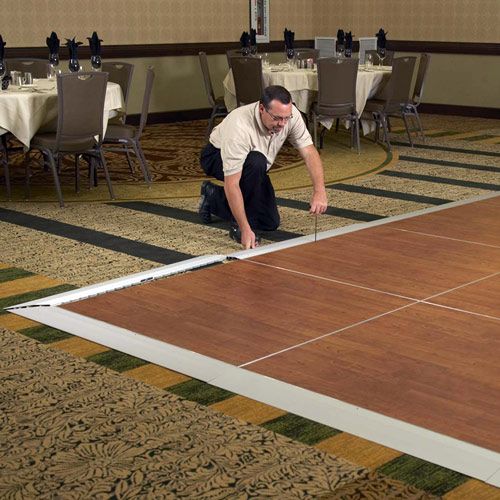
How to Build A Dance Floor
The whole neighborhood got involved or enjoyed watching the process taking place out in front of our house.
The above photo is about how involved Tessa got – she held a hammer for a photo but she was working full time so we need to cut her some slack.
- Create 6 frames from the 2 x 3’s that measure 4′ x 8′.
- Add four support pieces to each frame
- Nail a sheet of plywood to the top of each frame. Nail it down along the edges and across the support pieces.
- The moms got involved in this step of the process. Had to bring in the big muscles!
How to Paint a Dance Floor
The next step was the painting process. I decided that I wanted the floor to be checker board to go along with the carnival theme so I purchased black and white floor paint. We primed the boards first and then added a coat of white paint to each section.
Yes, I sat in a chair and watched it dry! I like watching paint dry.
After it was dry, the girls used blue painters tape to tape off the squares. The squares measured 24″ x 24″ so each 4 x 8 section had 2 x 4 squares.
Using small foam rollers the girls rolled the black paint into the taped off squares.
We waited for the paint to dry, removed the tape and we had a dance floor!
Finally, we numbered the pieces so that we knew how to put it back together once we moved it into the backyard.
The mending pieces were hammered into to hold the pieces together.
How Much Does It Cost to Build a Dance Floor
Total Cost of Dance Floor (including paint but not including labor) Approx. $300.00.
It was perfect and it was a wonderful addition to our carnival and YES, we needed a dance floor. Even my husband admits that now. It added such a fun element to the carnival and really got people dancing.
Who wouldn’t want to dance on a black and white checkerboard dance floor!!!
Reader Interactions
Build Outdoor Dance Floor on Ground
If you're wondering how to build a dance floor on uneven ground, then consider this DIY dance floor option, the quick answer is you should check into portable dance floors from Greatmats.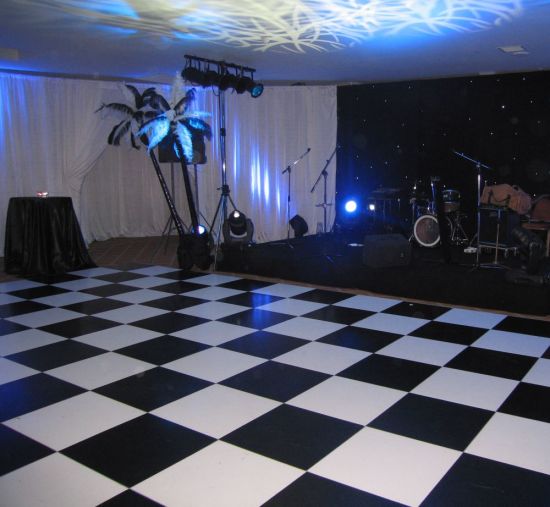
One of the great advantages of portable DIY dance floors is that they can be used in many different locations, so you can literally take the dance floor with you. Whether you're setting up a dance floor for a special performance or need a dance floor for a wedding or other event, you may find yourself in search of flooring for dance that can be used outdoors.
DIY Dance floors are versatile, but they aren't all versatile enough to be used on grass. Grass poses a number of different challenges. First of all, you'll need an outdoor dance floor on uneven ground that can withstand moisture without being damaged. Secondly, outdoor use means that you'll need a floor that can withstand UV rays. This article can inform how to build a outdoor dance floor on uneven ground.
Don't worry, though - at Greatmats, we understand the importance of being able to install a DIY dance floor over grass. That's why we stock a number of suitable temporary dance floor products that can give you the versatility that you're looking for. This article can inform how to build a portable outdoor dance floor on uneven ground.
This article can inform how to build a portable outdoor dance floor on uneven ground.
Necessary Features for A DIY Dance Floor on Uneven Ground or Grass
Waterproof Flooring: Make sure that any dance floor you consider for use on top of grass is fully waterproof. Even if you plan on covering the floor with a tent, there will still be moisture in the grass which a non-waterproof floor could absorb. We offer plenty of waterproof flooring options that are suitable for outdoor use.
As an added benefit, if you're working with waterproof flooring, it's no big deal if a guest spills a drink. Cleanup is easy.
If the ground is uneven, you'll need to provide a surface to help level it out before installing a dance floor, such as a waterproof composite mat system with strong interlocks. If you are confident that the ground won't get wet, simple plywood may do the trick to create a stable subsurface.
Shop Waterproof Flooring
UV Resistant Dance Flooring on Grass
Even a temporary outdoor dance floor on grass will be exposed to UV rays, which can cause your average flooring to fade, and possibly degrade the quality of the flooring over time.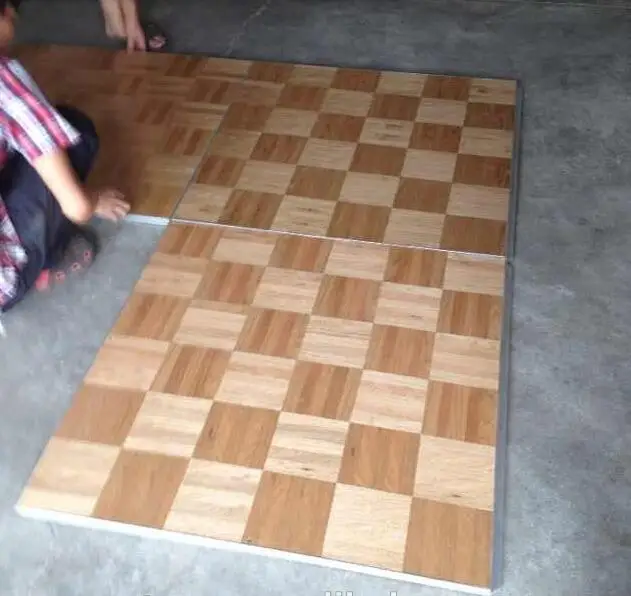 Look for a dance floor that has been treated for UV protection so that it can safely be exposed to the sun.
Look for a dance floor that has been treated for UV protection so that it can safely be exposed to the sun.
Portable DIY Dance Flooring
When you're working with a grass area, chances are you won't have a flat floor to wheel a flooring cart over. This means you'll need to carry the dance floor, so the portability of the floor is a major factor.
Modular dance flooring tiles are an ideal solution. These tiles are conveniently sized and easy to lift and carry, so even if you're installing the floor in a large field, getting the flooring into location won't be an issue. This will make installing the portable outdoor dance flooring on uneven ground or grass, and depending on the size of your floor, it's a task that a single individual can perform; no need for a professional installation. If you're attempting to install an outdoor dance floor over uneven ground, you may want to consider first laying down a layer of plywood, ground protection mats, or composite mats to level out the surface and prevent tiles from separating.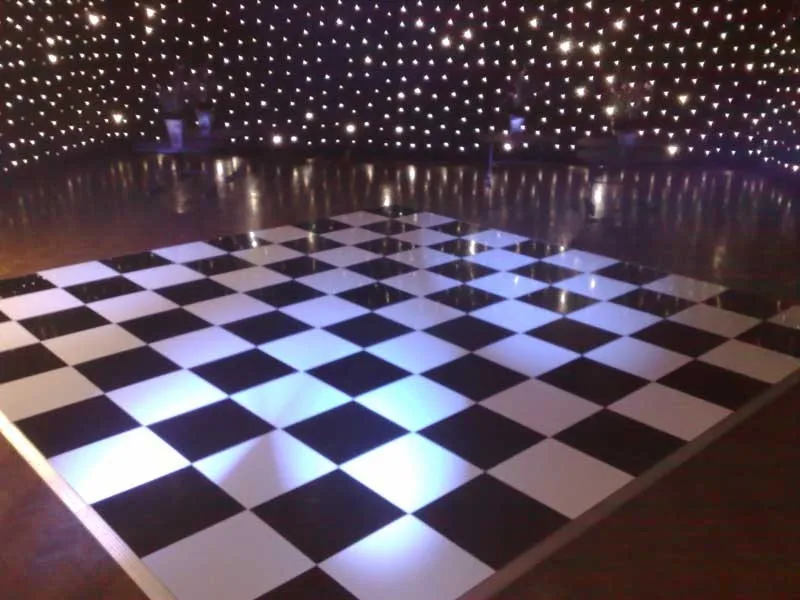
Easy DIY Dance Floor Installation
When you're working with tiles, you'll want a flooring product that connects together easily. Most of our tiles have a snap together or tab and loop closure design. Either of these systems is easy to use, and lets you quickly connect and disconnect tiles. This means you can quickly assemble the dance floor on grass, giving you plenty of time to finish with the rest of your event preparations.
Additional Tips for Choosing the Right Portable Dance Floor on Grass
We outlined a few specifications above about what to look for in a dance floor that will be installed on grass, but there are a few other tips you should know about choosing a dance floor for any event or venue.
- Consider the type of shoes dancers will be wearing - Footwear, particularly high heels, can damage some types of dance flooring. Make sure you select a product that-s appropriate for what people will be wearing.

- Think about the aesthetic that you want - Are you looking for a classic floor with a wood grain finish? Or is a more generic tile suitable for your needs?
- How large of a dance floor on grass will you need - How many dancers will you have, and how large does your finished floor need to be? Remember, you can always add or remove tiles to customize the size and dimensions of your floor during different events.
- Think about additional accessories you'll need, like ramped edges. Many of our products are available with ramped edges for safety, and for an overall clean finish.
Dance Floor on Grass - DIY Tile Options
Portable Dance Floor Tiles: Our Portable Dance Floor Tiles are versatile enough to be used both indoors and outdoors. These tiles are UV treated, so they'll resist fading when used outdoors. The tiles fit together tightly so you don't have to worry about them pulling apart while in use, and the commercial grade vinyl top surface is durable enough to hold up to serious dancing.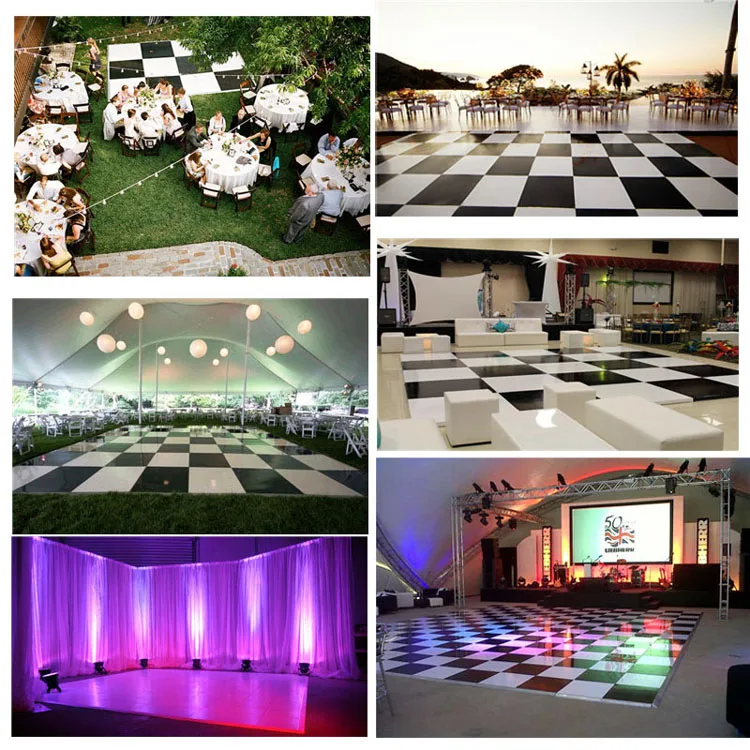 Ramped border edging is available to create a clean, finished edge that is both safe and attractive.
Ramped border edging is available to create a clean, finished edge that is both safe and attractive.
One major benefit of these tiles is in their construction. The tiles themselves are built on a raised base, so air and moisture can circulate freely beneath the tile's surface. This helps to prevent water from working its way up to the actual dancing surface, even when the tiles are used outdoors.
Sized at 12x12 inches, these portable dance floor tiles are easy to handle and transport. You can vary the size of the floor by setting up just some or all of the tiles, and can also customize the floor's dimensions according to your needs. The tiles fit together quickly and easily, and you can assemble a 10x20-foot dance floor on grass in just minutes. They can be installed over grass, but note that they're only intended for temporary outdoor installations and do still require a hard, flat surface. Significant bumps, spongy ground and/or mud in you grassy surface can cause the installation to become difficult and/or uneven.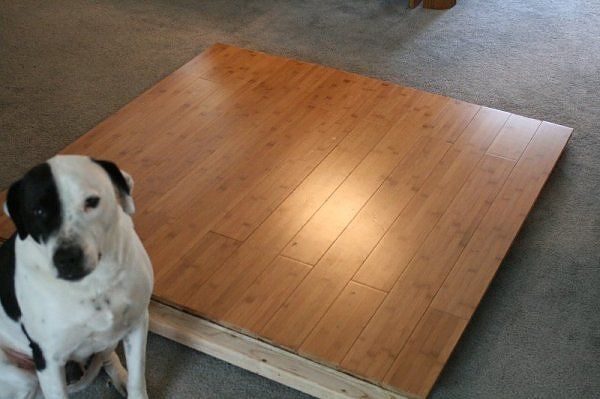
With a choice of eight different finishes, including six eye-catching wood grain options, you can have a beautiful floor suitable for any event.
Shop Portable Dance Floor Tiles
Portable Outdoor Floor Tiles
For a highly durable option, consider our Portable Outdoor Floor Tiles. These tiles are extremely strong, and can even support the weight of vehicles. While they don't offer the traditional wood grain finish of a dance floor, they are highly versatile, making them a great investment for event facilities.
These tiles are both waterproof and UV resistant, so they can be safely used outdoors. Their unique hinge system makes installation a breeze, as it quickly locks into place for a secure fit that won't separate during use. Measuring 3/4 inch thick, these tiles are made of a polypropylene plastic that is strong enough to easily support large crowds.
Perhaps the greatest benefit of these tiles is the fact that they can be used over many different existing surfaces, including uneven terrain.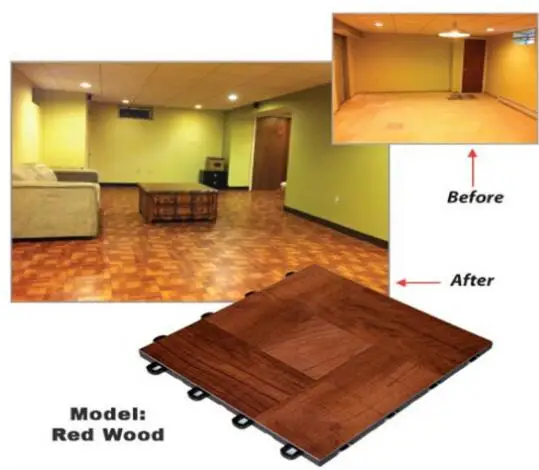 There's no worrying about finding a perfectly flat space, which will save you both time and stress. You can place these tiles directly on top of grass, and the tiles can even be rolled up for easy storage and a faster installation the next time. Just keep in mind that the tiles will, to a certain degree, conform to the ground it is sitting on, so you will not have a completely level dance floor on grass if the subsurface is uneven.
There's no worrying about finding a perfectly flat space, which will save you both time and stress. You can place these tiles directly on top of grass, and the tiles can even be rolled up for easy storage and a faster installation the next time. Just keep in mind that the tiles will, to a certain degree, conform to the ground it is sitting on, so you will not have a completely level dance floor on grass if the subsurface is uneven.
Shop Portable Outdoor Floor Tiles
Durable Dance Flooring Tile
Want a durable dance floor on grass with the look of real wood? Our ProCourt Gym Flooring Tiles offer you both. These tiles feature a generous 20-mil wear layer that is both scuff and stain resistant, ensuring the tiles continue to look great. Please note that these tiles aren't UV treated, and should only be used outdoors temporarily.
These tiles offer a raised flooring surface which will grip and accommodate grassy surfaces. They snap together easily for a fast installation, and are designed to withstand repeated installations.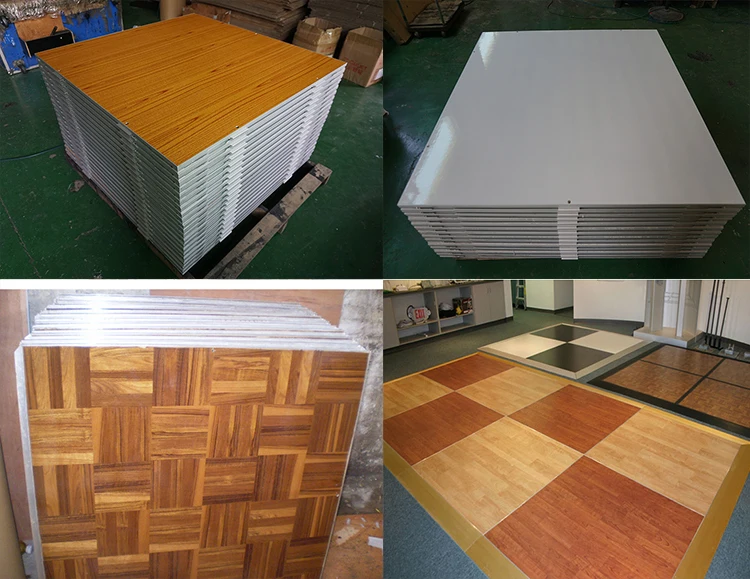
Shop Portable Outdoor Floor Tiles
What You Need to Know About Installing a Dance Floor On Grass
While the above products are suitable for use as a portable outdoor dance flooring on uneven ground, it's important to realize that these products are only intended for temporary use. Don't leave them in place longer than necessary, and if possible, install a tent or find another way to protect the flooring from the weather, which will prolong its life.
When deciding where to install the dance floor, look for an area that is as flat and as level as possible. Installing the flooring on an uneven surface may make it difficult to get the tiles to connect correctly, and can place unnecessary stress on the tiles. It may also make the flooring itself uneven, and an uneven dance floor on grass can be dangerous for dancers.
You'll have the best results if you install the flooring over grass that has been mowed, since it will create a firmer, flatter surface than you'll have if you're working with grass that is longer. Placing a layer of plywood under any of these tiles will definitely help create a flatter, more stable and safer dance surface as well.
Placing a layer of plywood under any of these tiles will definitely help create a flatter, more stable and safer dance surface as well.
When it comes time to uninstall the flooring, try to do so when the flooring is thoroughly dry. If the weather isn't cooperating, then dismantle the flooring and allow it to dry indoors before stacking it and storing it away in a closed space, like a closet.
Most of our dance flooring tiles are designed to be easy to clean, but be sure to review the specifications for the particular product that you purchase. In most cases, you can damp mop the floor with a household cleanser.
Please don't hesitate to contact our great customer service team if you have any questions as you explore our many outdoor dance floor options.
What to do with an uncomfortable dance floor?
A Hindu proverb says, "He who cannot dance puts the blame on the dance floor", but let's consider a situation where the dance floor is really uncomfortable!
If the dance floor is too slippery, you feel like a cow on ice and are afraid to dance for fear of losing your balance. Of course, a lot of spins look very impressive, but on a slippery floor you can't properly start them and finish them too. And if the dance floor is too sticky, it's hard to do something quickly, and your knees may start to hurt.
Of course, a lot of spins look very impressive, but on a slippery floor you can't properly start them and finish them too. And if the dance floor is too sticky, it's hard to do something quickly, and your knees may start to hurt.
Finding the perfect dance floor is like chasing a ghost, so most of the time we'll have to deal with less than ideal ones.
But there are some tricks that will help you.
Sticky dance floors
Sticky floors can be easily corrected with baby powder. The downside is that it needs to coat the floor surface, so unless you're in a place where people are used to it, just apply the powder on the soles of your shoes, not on the dance floor, although this reduces the effect somewhat. Also remember that everyone's subjective sense of how sticky the floor is is different. Don't think that if you can't turn around, then the whole dance floor needs to be treated and that everyone will thank you for it.
Don't overuse twists and turns (Your own or your partner's) when the dance floor is sticky! You can damage your knee joints.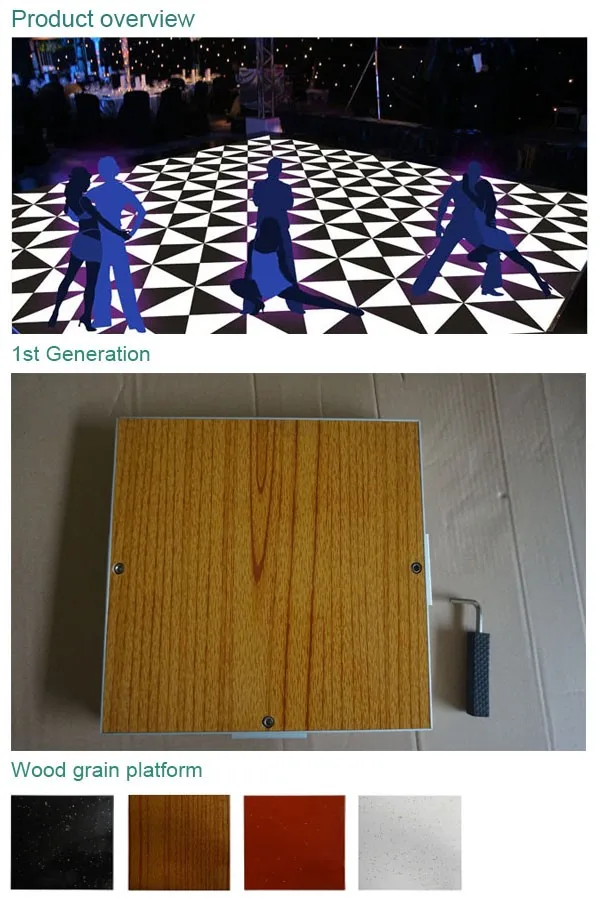
Slippery dance floors
A slippery dance floor can be a more difficult problem. I've experimented with a lot of traditional remedies (and some non-traditional ones), but your best bet is castor oil. It will get you through a few dances before it dries. Use it sparingly on the soles of your shoes as it is very sticky and can make slipping difficult. If you overdo it.
Wax also helps, but only at the very beginning. It must be constantly shaken off and reapplied, otherwise it becomes slippery on its own. But many people complain about it.
If you don't have any of these, water or soda will help too. Unfortunately, they dry out very quickly due to the high friction temperature.
And of course using a shoe brush can give a good result, although it works less and less as the shoes wear out and then it is used more for cleaning.
Good technique
In addition to the above methods, good technique will help you dance on an uncomfortable dance floor.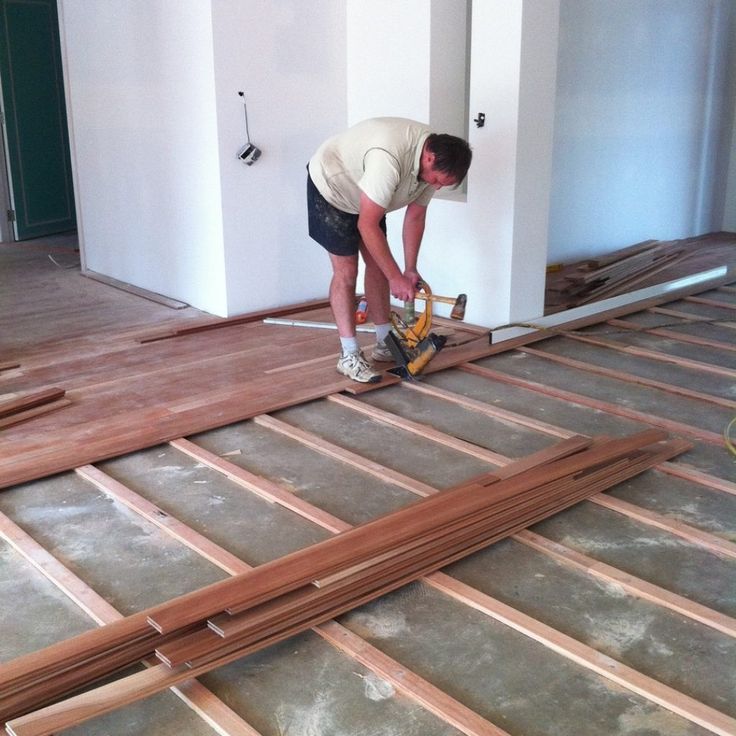
More often than not, it is beginners who will be dissatisfied with an imperfect gender or any gender that is different from what they are used to. With experience on the dance floor, which used to be perceived as slippery, it becomes easier to dance.
Your center of gravity must always be exactly over the foot you are stepping on, otherwise you will easily slip. Avoid large steps and steps at a slight angle to the dance floor. Relax your legs and straighten your toes in order to get the best grip.
Tips for girls with high heels
If you are afraid of falling and push yourself up, your body becomes rigid, which increases the risk of falling. The more you use and work with the floor, the more relaxed and stable you become.
Try to lower the weight from the top of your shoulders to your hips. Watch your position to make sure you balance yourself and don't reach for your partner for support.
If you don't feel comfortable or stable enough in high heels, consider wearing flats or jazz shoes until you can better control your weight.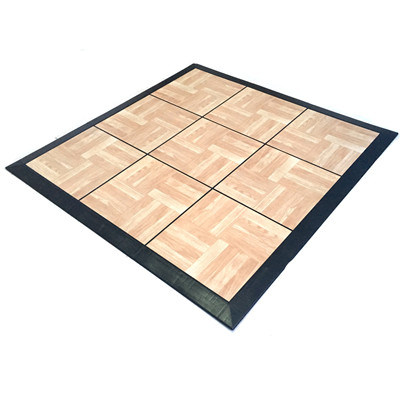
Masking tape
With slippery and sticky dance floors, masking tape can help. It is glued in horizontal or vertical stripes on the sole of the shoe.
Masking tape is special because it is easy to remove. However, once the tape becomes frayed, it becomes more difficult to remove, so I would recommend using the tape for a night or two and then peeling off the shoes.
The almost magical thing is that the tape has the right degree of slip on any surface except very slippery.
My old dance shoes (with hard rubber soles) started to get sticky on good ground. Instead of throwing away my sneakers and buying new ones, I put masking tape on them and they became comfortable to dance in again.
Here are some situations where masking tape can help:
1. On any sticky floor. It doesn't matter if it's wooden or not. Dance floor coverings can be very different: concrete, vinyl, carpet, sticky wood floor and so on. If you think the surface is too sticky, use this tape.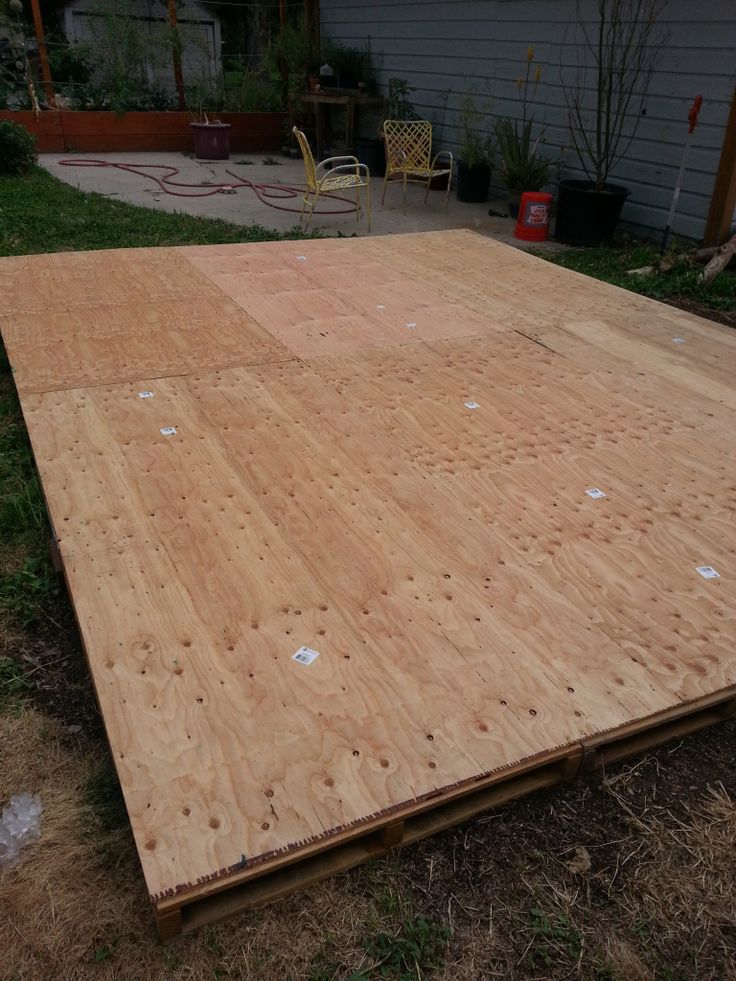 It can make your night much more pleasant.
It can make your night much more pleasant.
2. When you need to dance on paving slabs or on concrete. There are times when you have to dance outdoors, and often the dancing surface is not ideal at all. It is very difficult to rotate on paving slabs and you can injure your knees. Just stick painter's tape on your shoes and you can do double or even triple spins. Everyone else will be watching and wondering how you do it.
I would also recommend using masking tape for shoes with suede soles to avoid damaging them.
3. When you want to dance not in dance shoes.
Great news - you can now use regular shoes with rubber soles for dancing! Just stick painter's tape on the sole.
4. Here is another very useful situation. Especially if you are a dance teacher. Usually beginners come to class in their casual shoes. Hand them masking tape and their shoes will instantly become comfortable for dancing.
How do you deal with uncomfortable dance floors? Write in the comments about your methods.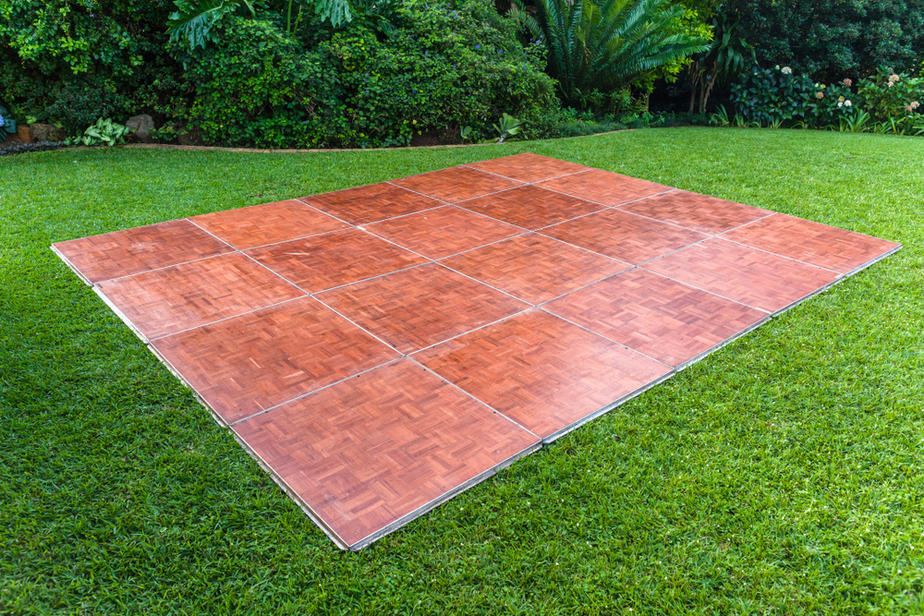 Perhaps this will be useful to someone.
Perhaps this will be useful to someone.
The article was written based on the materials of the sites: http://www.salsadancingtips.com, http://www.salsaville.com
Self-leveling floors in the club and shopping mall
In nightclubs and restaurants with high traffic dynamic and abrasive loads. Not every material is able to withstand such an impact, while retaining its visual appeal and physical properties. Entertainment venue owners who decide to save on flooring usually pay twice. Within a few months, cracks, chips, scratches and even potholes appear on the surface. Unscheduled repairs cost a decent amount.
In order not to regularly allocate funds for repairs from the budget, it is important to choose the right hard-wearing and visually attractive flooring.
The ideal floor for the club
A self-leveling coating that combines excellent performance and decorative performance - the ideal floor for the club. The wear-resistant base will retain its strength and integrity for many years without losing its original appearance.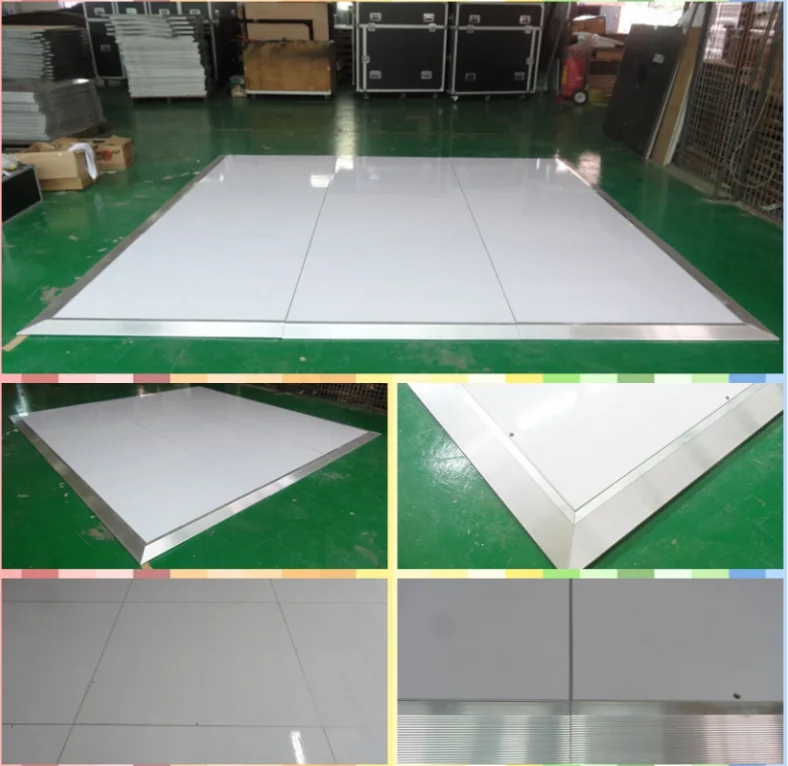 In addition, the self-leveling floor has other properties necessary for coatings in such premises, including:
In addition, the self-leveling floor has other properties necessary for coatings in such premises, including:
- anti-slip - in this regard, a rough coating is ideal. However, such a floor is more difficult to clean. Therefore, the best solution would be a smooth non-slip surface that is as safe as possible for club visitors;
- noise absorption – covering for the stage, dance floor should effectively dampen sounds, thereby contributing to the creation of a comfortable atmosphere for club visitors;
- easy to clean - offers anti-static effect, the ability to repel dust and dirt. Due to the constant presence of a large number of people, it is important that floor cleaning does not require the use of special expensive tools and does not take a lot of time.
In most cases, the flooring for the dance floor is a combination and is different from the floors in other rooms.
Choice of coverage for a club or restaurant
All owners of clubs and restaurants can be conditionally divided into two camps - those who save every penny, and those who invest a lot of money in quality materials.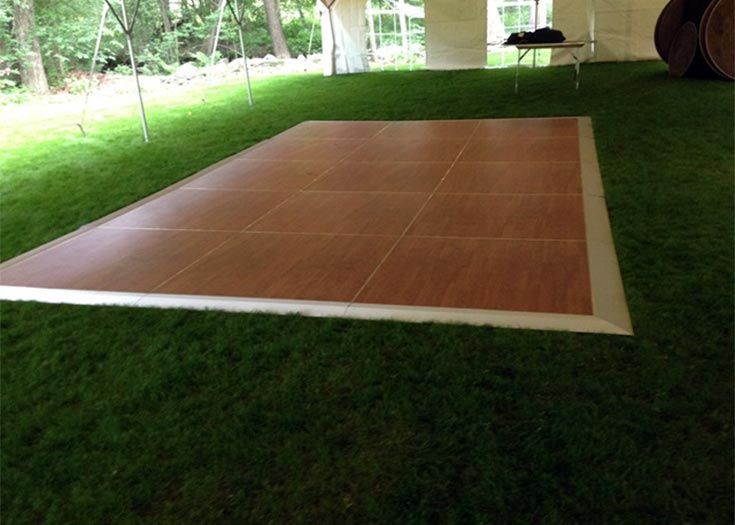
The first try to cut the estimate as much as possible. Such businessmen save on ventilation and sound insulation, room decor and interior items. For flooring, they choose wood or concrete. Savings turn sideways: the wooden dance floor quickly begins to creak from mechanical loads, and the concrete screed begins to deform and dust. The first scheduled inspection by the Ministry of Emergency Situations and Rospotrebnadzor usually ends with an order to suspend the operation of the premises or a protocol on an administrative offense.
The second ones are done immediately expensively and conscientiously, in accordance with SanPiN and a sense of style. They make a choice in favor of a polymer floor that can withstand severe mechanical stress and looks attractive. More money is spent on the purchase of materials, but there is no need to pay fines and run around the authorities.
The most practical and functional option is self-leveling polymer floors that meet all of the above requirements, as well as shock-resistant and fireproof.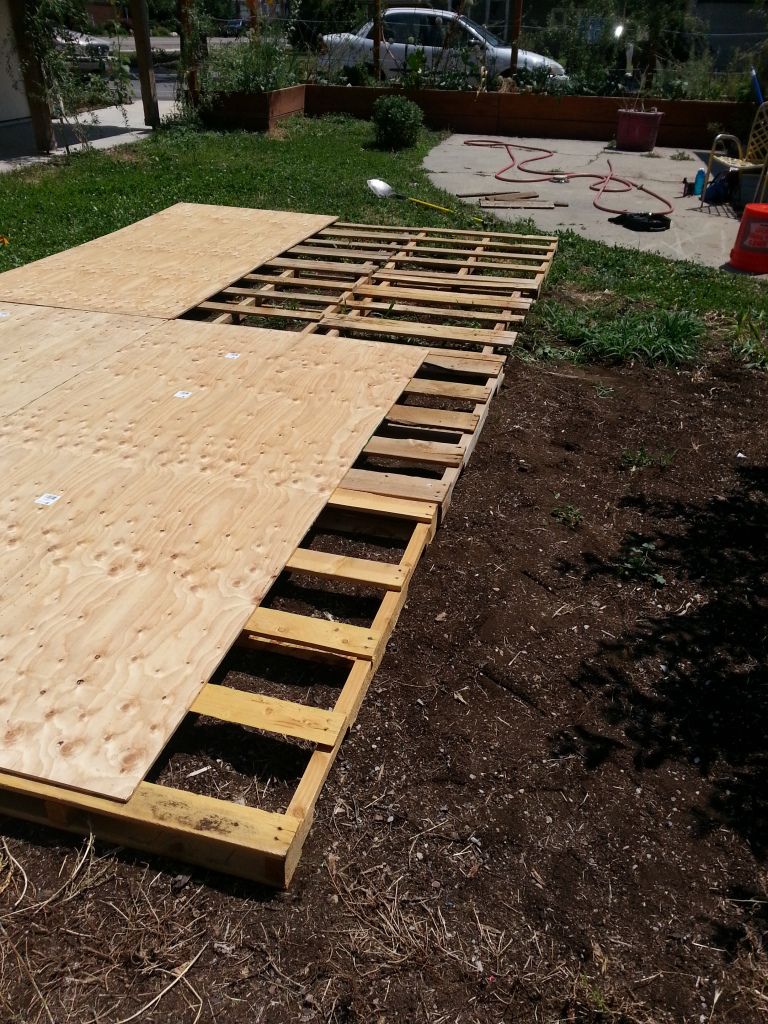
There are three coating options:
- polyurethane - versatile, durable, elastic, resistant to dynamic loads, easy to clean, easy to decorate;
- epoxy - lay on floors near bar counters, in kitchen areas. Such coatings are durable, resistant to abrasion loads, various chemical compounds, high temperatures;
- methyl methacrylate - suitable as a cover for the stage, play and dance areas, i.e. areas with increased loads. Differ in the special durability and reliability.
Polyurethane floors for clubs, restaurants, cafes, dance floors are characterized by high durability and reliability. They have a wide range of colors. Coatings with a 3d effect have special decorative characteristics. The design of such a material is formed by drawing, photography, or even three-dimensional objects placed under a layer of transparent polymer. The combination of decorative design and practical characteristics of the material allows you to get a durable and original result.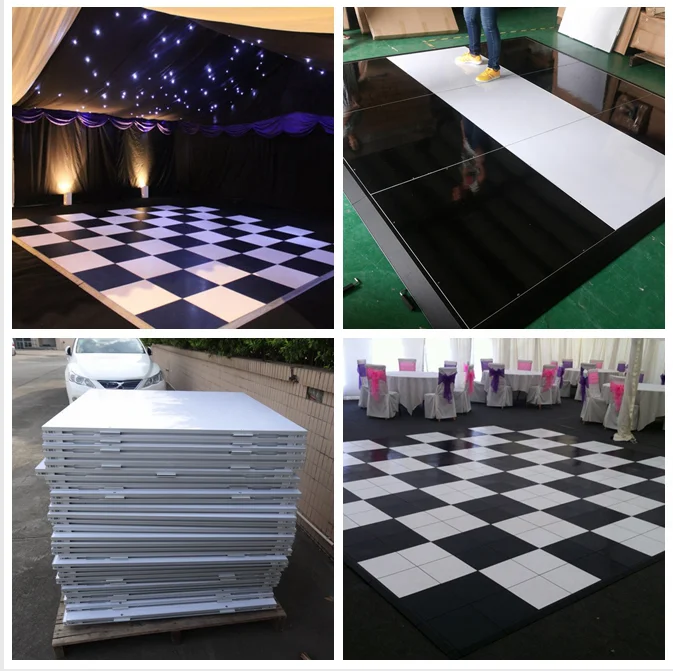 Self-leveling floors 3d will allow you to distinguish the institution from the background of competitors.
Self-leveling floors 3d will allow you to distinguish the institution from the background of competitors.
Epoxy coatings do not have the same decorative characteristics as their polyurethane counterparts. They are characterized by high strength and resistance to chemical stress. Epoxy floors suit in areas where there is a possibility of contact with fats, oils, hot liquids. They are indispensable in the arrangement of places for cooking, as well as in areas where bar counters are installed.
Methimethacrylate floors are the right choice for dance floors. They are characterized by resistance to intense dynamic and abrasive influences. Although these compositions are primarily used in industrial facilities, this does not limit their scope of use.
Polymer self-leveling floors are easy to install. The process of laying such a coating consists of several stages:
- preparation of the concrete base in strict accordance with the technology;
- ground coat;
- pouring 1-2 coats.
